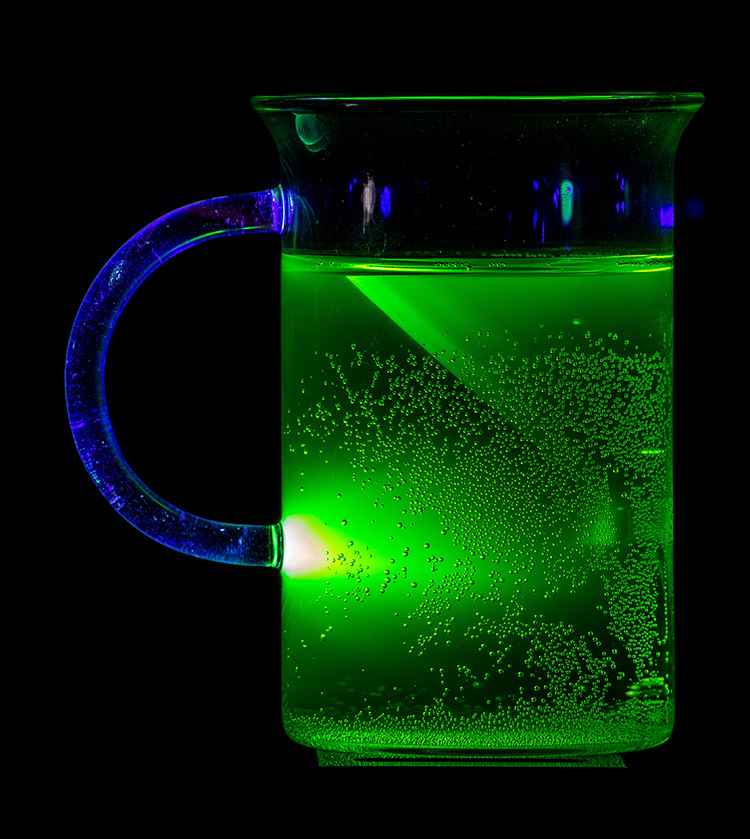
FIRST PLACE
“A blue/UV laser pointer was coupled into the handle of a cup, which guides the light and feeds it into a fluorescing liquid that lights up in green colors. The surrounding lab environment was darkened completely to highlight the effect. The image was taken in the lab at Leibniz-IPHT Jena.”
—Tobias Tieß, Leibniz-IPHT, Germany
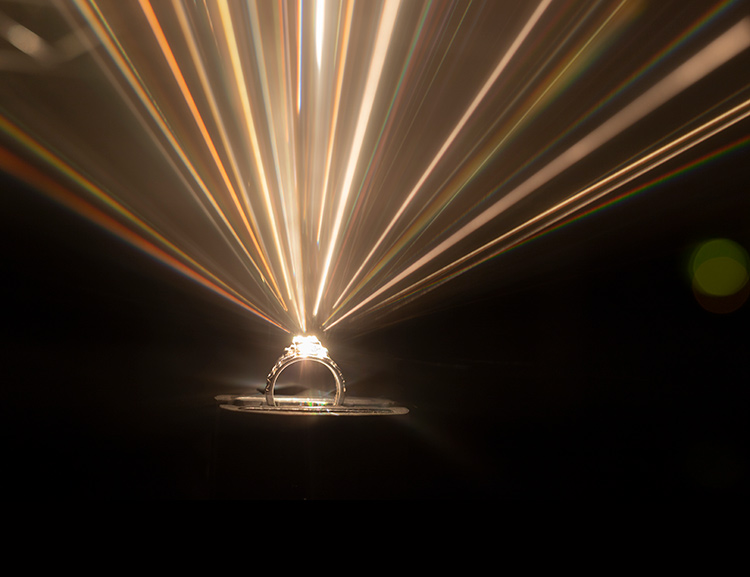
SECOND PLACE
“Sparkles from an engagement ring are visualized by a collimated supercontinuum laser. A piece of paper is used to trace out the beam in this long-exposure image. Small rainbow beams shoot away from the stone—proof that the dispersive design of the diamond is doing its job.”
— Benjamin Cromey, University of Arizona, USA
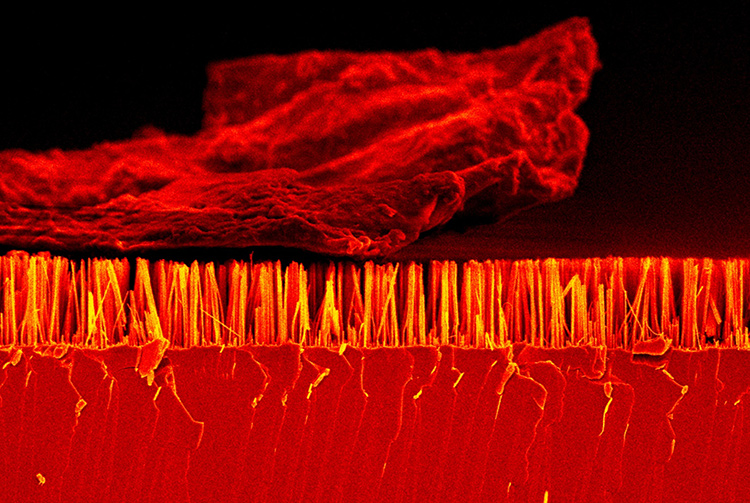
THIRD PLACE (tie)
“The image shows a chunk of dust on a silicon substrate with a nanowire-like structure on the surface—which together resemble a meteorite falling on a forest. The surface is coated with chromium for better resolution in the scanning electron microscope (SEM).”
— Bingtao Gao, Univeristy of Iowa, USA
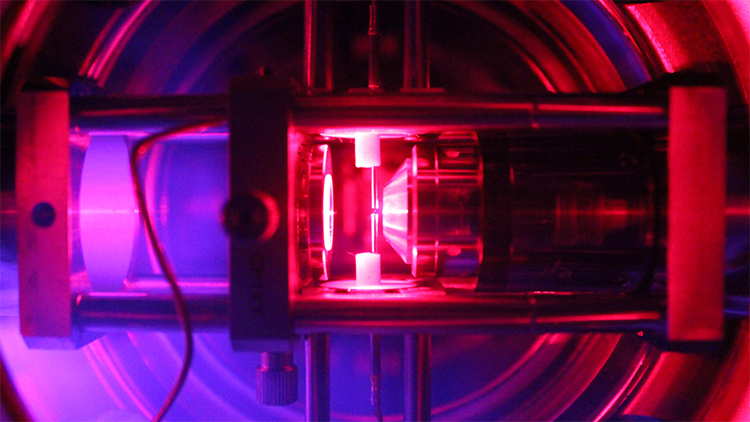
THIRD PLACE (tie)
“Tightly focused light from a microscope objective (right) forms an optical tweezer, able to trap and levitate a single silica nanoparticle in vacuum. Two electrodes apply an electric field that allows measurement of the particle’s charge and mass, turning the instrument into a very sensitive force detector. The purple glow on the left comes from a plasma generated in the vacuum chamber, to control the net charge of the particle down to the single-elementary-charge level.”
— Francesco F. Ricci, ICFO–Institute of Photonic Sciences, Spain
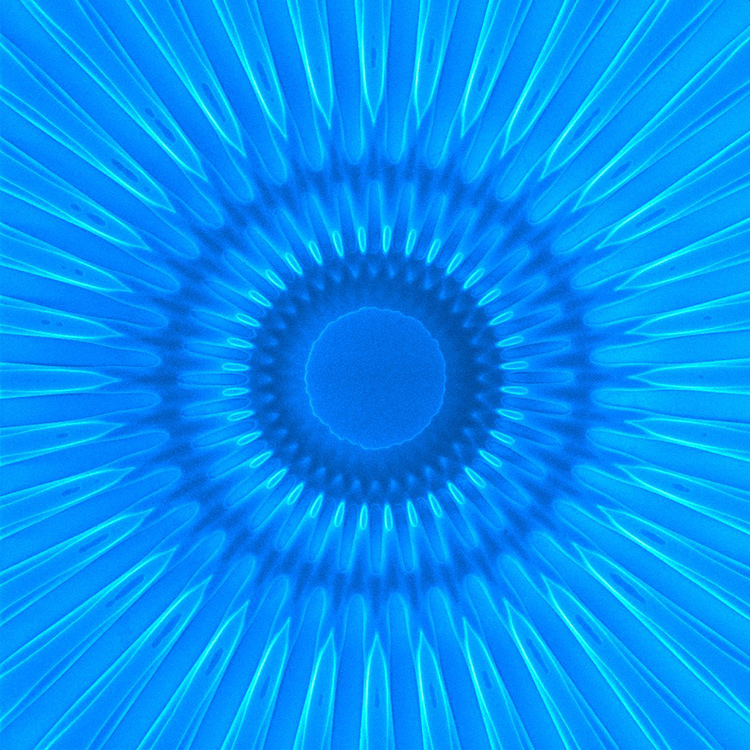
HONORABLE MENTION
“This SEM image is the center of a resolution test for optical lithography (ultraviolet) using vacuum contact. While the straight lines were lost at the submicron scale of the pattern’s center, a beautiful interference pattern was created.”
— Alexander C. Walhof, University of Iowa, USA
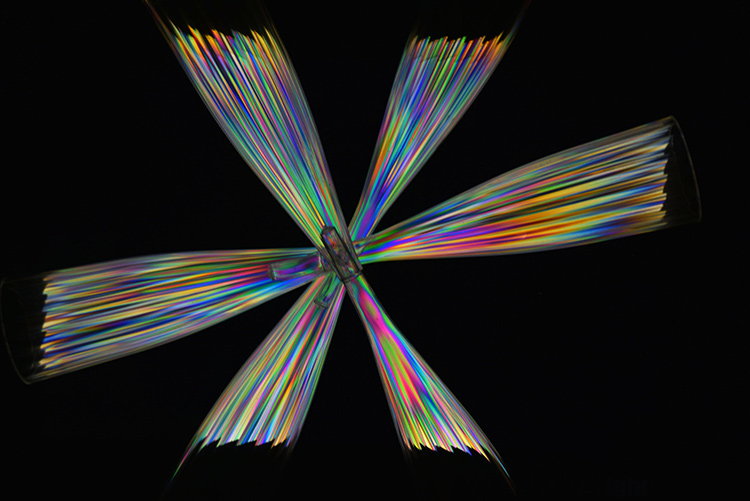
HONORABLE MENTION
“Birefringent flower: an arrangement of plastic flutes between a linear and a circular polarizer. The colors represent wavelength-dependent retardance paths that rotate the polarization orientation through different angles.”
— Samuel F. Pellicori, Pellicori Optical Consulting, USA
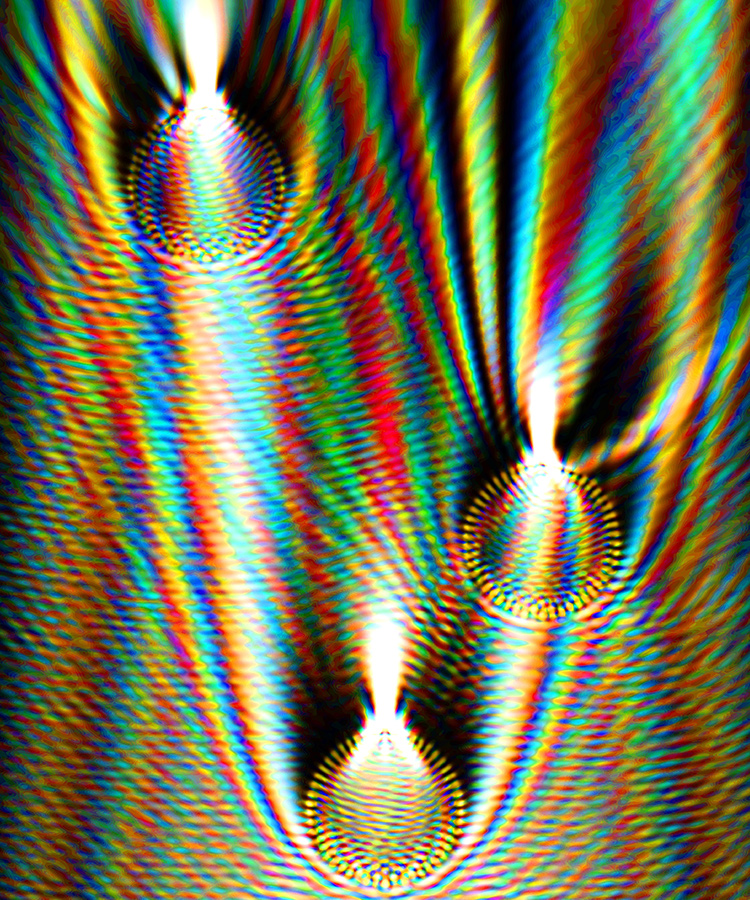
HONORABLE MENTION
“Three spheres trapped in white light. Calculated intensity as particles are added reveals that each of the particles gives rise to a new power maximum near the place where the next particle settles.”
— Shai Maayani, Massachusetts Institute of Technology, USA

HONORABLE MENTION
“The spiral bow: as laser light scatters in a glass cylinder, the light rays split and bounce back and forth, making the long-term prediction of the rays’ trajectories very difficult.”
— Albetro A. Tufaile, Soft Matter Lab, EACH-USP, Brazil
For this year’s contest, OPN received 49 intriguing entries. We thank the panel of judges who provided insight on those images and helped select the winners: Mihaela Dinu, LGS Innovations, USA; Dmitry Dylov, Skolkovo Institute of Science and Technology, Russia; Alexandre Fong, TruTag Technologies, USA; Bob D. Guenther, Duke University, USA; Brooke Hester, Appalachian State University, USA; Nick Lambert, Precision Optical, USA; Giovanni Milione, NEC Laboratories America, USA; Arlene Smith, Avo Photonics Inc., USA; and Stephen R. Wilk, Xenon Corp., USA.
Visit www.osa-opn.org/home/gallery/photo_contests/2018 for a gallery of all the submissions to this year’s After Image photo contest.

